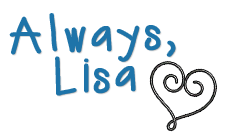Using specific texts to delve into
Craft and Structure with the
Common Core Standards
Start by choosing a story that has some connection to history/reality. That way you can also include some supportive pieces. Here I included a story, a YouTube video of a song with images and a flyer from the time period.
Story:
Have you read A Train to Somewhere? It's by the amazing Eve Bunting. Based on the 19th century orphan train, it follows the story of a young girl hoping her mother will meet her at one of the stops.YouTube video:
Rider on an Orphan Train written and performed by David Massengill. Here is link to a YouTube video of the song with images from the time period.Flyer:
Here is an orphan train flyer from the time.Craft and Structure Reading Standard #4
CCSS.ELA-LITERACY.CCRA.R.4
"Interpret words and phrases as they are used in a text, including determining technical, connotative, and figurative meanings, and analyze how specific word choices shape meaning or tone."
Some questions that meet the standard:
- Why do you think the author used the word: clutches? What feeling is she trying to evoke?
- In italics, the author says She'll be there. She'll want me. Who is she?
- On page 12, you get a picture of what the adoption process looks like. Why did the illustrator draw it this way?
- The author says the people felt the boys muscles. Why do you think the author wrote that?
- "My mother didn't want me." The author wrote this very bluntly. Do you think this is true?
- Mrs. Book says "Sometimes what you get turns out to be better than what you wanted in the first place." What does that mean?
Remember to focus on the intent of the author. What feelings or understandings is the author trying to get across?
Craft and Structure Reading Standard #5
CCSS.ELA-LITERACY.CCRA.R.5
"Analyze the structure of texts, including how specific sentences, paragraphs, and larger portions of the text (e.g., a section, chapter, scene, or stanza) relate to each other and the whole."
David Massengill lyrics : "Rider On An Orphan Train"
And my brother did the same
They split us up in Missouri
James was five and I was three
He got taken by some pair
But for me they did not care
We were brave and did not cry
When they made us say goodbye
That was the last I saw of him
Before some family took me in
But I swore I'd run away
And find my brother James someday
I went back when I was grown
To see how old the Children's Home
And I asked for to see my file
Of when I was an orphan child
It's sad, they say, there's been a flood
File washed away in Missouri mud
Sometimes life is a stone wall
You either climb, or else you fall
In every town, on every street
All the faces that I meet
And I wonder, could one be
My brother James come back to me
Though I don't know where he's gone
I have searched my whole life long
Now I roam from town to town
But there's no orphan lost-and-found
Sometimes I dream a pleasant sight
My brother James and I unite
Remembering our last goodbye
No longer brave, we start to cry
I hope he lives a life of ease
And all his days a soft, warm breeze
May he sit upon a throne
And may he never sleep alone
Once I rode an orphan train
And my brother did the same
They split us up in Missouri
James was five and I was three
Craft and Structure Reading Standard #6
CCSS.ELA-LITERACY.CCRA.R.6
"Assess how point of view or purpose shapes the content and style of a text."
Look at the flyer. Do you fee the creator was persuasive in creating this flyer? What type of people would come to adopt children?
As you can see all the questions focus on the author and the intentionality in using certain words or structures in demonstrating a point of view or writing for a specific purpose.
Check out these amazing authors and learn more about teaching.

How can I make your job easier this year? Let me know in the comments. If I use your ideas for a blog post, you will win $10 to Teachers Pay Teachers. Even better, if I use your ideas to make a resource in my store, LisaTeachR's Classroom, I'll send you a free copy of that resource!








































